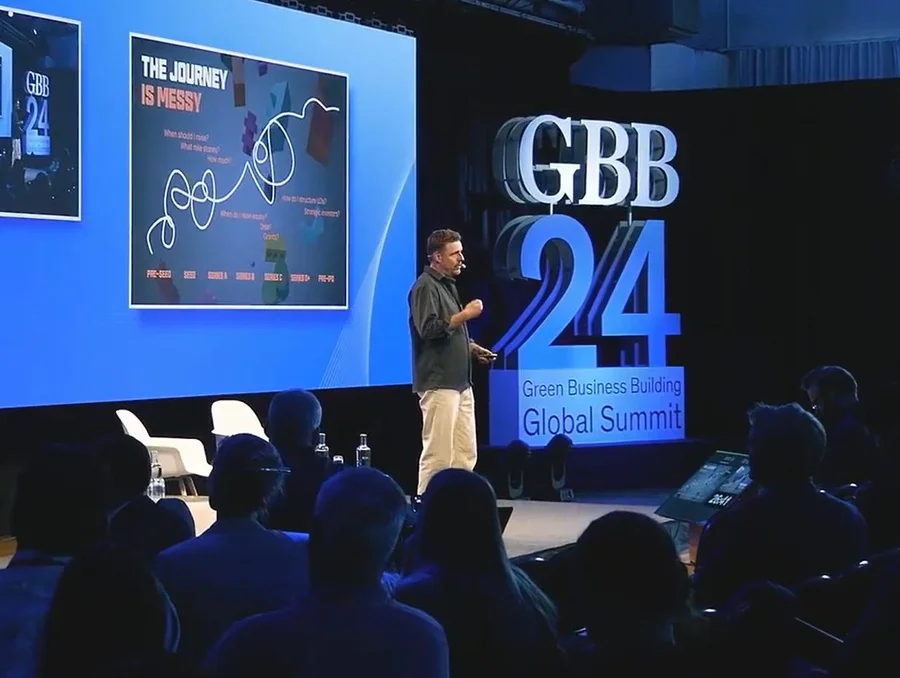Discover how The Climate Brick empowers climate tech startups to secure funding and scale rapidly, focusing on solutions to combat climate change.
The spotlight on climate technologies and their innovators intensifies as they become key players in the climate change arena.
These technologies, according to The Climate Brick’s research, might counteract 90% of human-induced emissions worldwide by 2050.
McKinsey has highlighted the need for 1,000 climate tech unicorns — each valued at no less than US$1bn or more — and 300 decacorns, valued at US$10bn or more, by 2030 to make a successful transition feasible.
Yet, converting an innovative concept into a scalable business solution remains a significant hurdle for climate tech firms.
To address this issue, a group of venture capitalists — with support from McKinsey — has created The Climate Brick.
The Climate Brick explained
The Climate Brick is essentially an open-source playbook tailored to assist climate tech entrepreneurs in overcoming the complexities of funding and growth.
This manual has been moulded by insights gathered from an exhaustive analysis involving more than 3,000 climate tech start-ups and in-depth interviews with varied stakeholders.
It sets forth seven distinct scaling and fundraising pathways. Each pathway, or ‘brick,’ comes with tailored financial, commercial and product recommendations and highlights three critical unlocks necessary for success.
The resource is aimed at optimising the time climate tech companies spend on fundraising, thus allowing them to concentrate more fully on enlarging their enterprises.
It serves as a holistic tool for entrepreneurs, investors, universities, established corporates and policymakers within the climate tech landscape.
Sandra Malmberg, one of The Climate Brick’s Founding Creators and a Partner at EQT Ventures, says: “Some of the smartest, most brilliant brains in the world are working on climate technologies, but they spend so much time trying to understand what they need to deliver on in order to unlock financing.
“Common questions that we get from climate tech entrepreneurs are: ‘How do I raise the next round?’ and ‘What are the most critical milestones on our scaling journey?’
“Fundraising is a dance — particularly in the relatively new climate tech space, where it can take months to find the right match between an investor and a founder.
“So we thought, ‘What if we could help companies save time on fundraising, so they can shift that time toward scaling their business instead?’”
Strategic advice from The Climate Brick
The Climate Brick advocates several strategies to help climate tech companies rapidly scale and secure funding.
They are:
- Identify your journey: Companies should determine which scaling and fundraising journeys best fit their profile.
- Focus on critical unlocks: Each journey type has three ‘critical unlocks’ — something The Climate Bricks underscores as the most important factors for successful fundraising and scaling. For example, Gigascaling companies should focus on developing a clear road map to cost competitiveness, demonstrating the ability to execute and scale rapidly, and securing committed offtakes
- Optimise the capital stack: This includes considering non-dilutive financing options, which can significantly impact a company’s trajectory
- Hire specialised talent: Fellow The Climate Brick Founding Creator and Founder of Contrarian Ventures Rokas Peciulaitis says: “Due to the complexity of a climate tech company’s capital stack, compared with that of a traditional software company, you need a highly experienced CFO with a strong understanding of financial structuring.”
- Adopt a collaborative approach: Climate tech requires a more collaborative mindset than traditional tech sectors. Rokas continues: “The climate tech space requires a more collaborative approach. It’s not so much a question of ‘move fast and break things’ but rather ‘move fast and fix things — together.’”
- Use The Climate Brick as a guide: Founders can use the manual as a checklist for financing and operational milestones, helping them avoid common pitfalls and make informed decisions about building their capital stack and prioritising actions. Ted Persson, another Partner at EQT Ventures and The Climate Brick Founding Creator, says: “Many founders have told us this is a badly needed initiative of immediate value to them. They use it as a checklist for financing and milestones of how to run the business operationally. Several late-stage founders have said they would have wanted something like this when they started off, to avoid many of the pitfalls along the way.”
- Engage with multiple stakeholders: The climate tech journey involves many stakeholders beyond just founders and investors. Companies should engage with universities, supply partners, regulators, grant providers, debt providers, project funders and offtakers
- Leverage grants and public funding: This is especially true for companies working on novel technologies, ensuring grants and public funding is a critical step in the early stages.
Looking forward with The Climate Brick
Sandra says that The Climate Brick is regarded not as a finite project but as an evolving initiative meant to act as a communal and enterprising co-creation.
Its goal is to continuously adapt and refine to effectively support as many climate technologies as possible in scaling operations successfully.
“We don’t see this as a project with a start and an end,” Sandra elucidates. “We want it to become a movement, a manual that is for the community and also by the community — an independent and entrepreneurial co-creation to deliver on our North Star, which is to bring as many climate technologies to scale as possible.”



